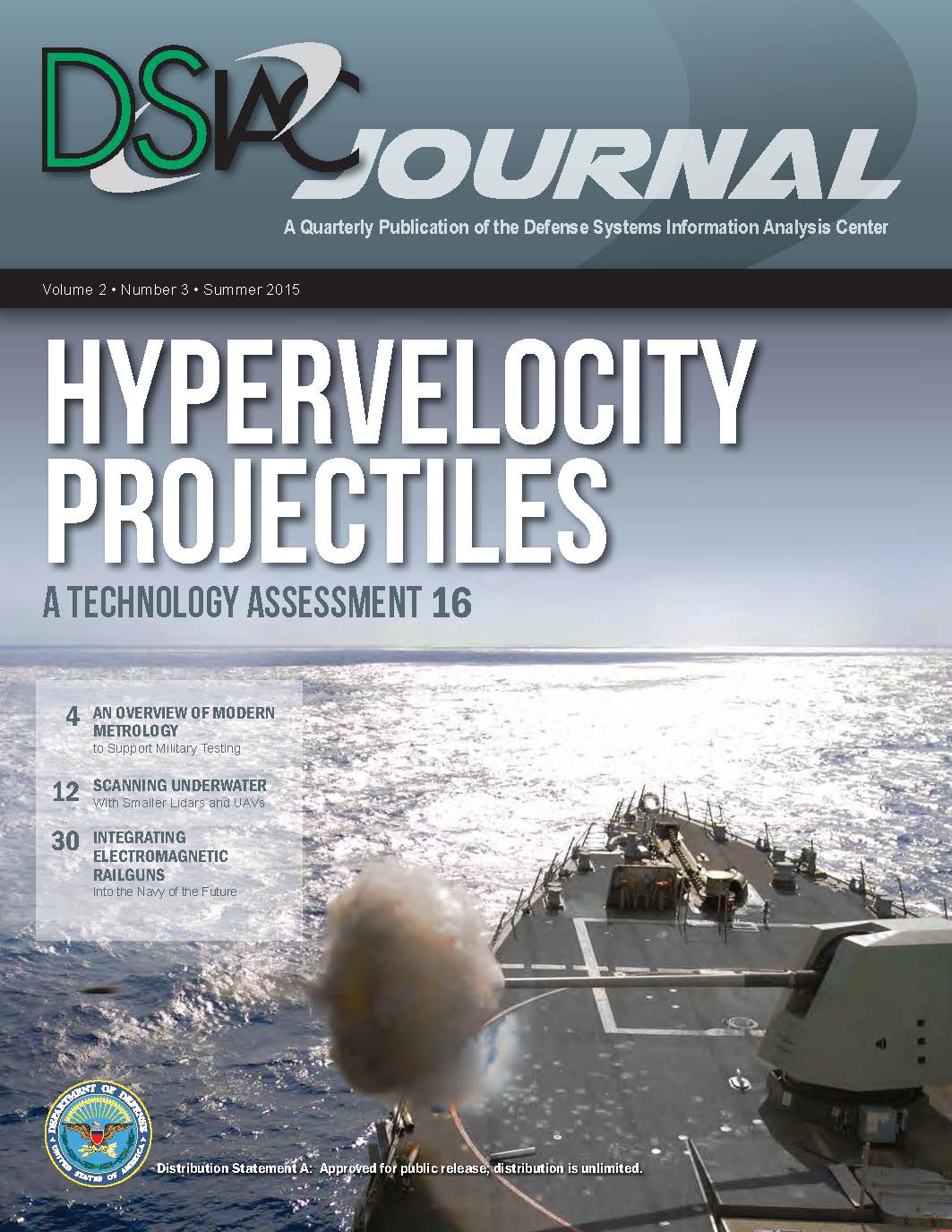an email newsletter released every 3 weeks highlighting the latest articles, events, technical inquires, and voices from the community
Summer 2015: Volume 2 Number 3

Summer 2015: Volume 2 Number 3
Published: August 1, 2015
You may not be aware that one of the core functions of the Defense Systems Information Analysis Center (DSIAC) is to perform technology assessments related to our nine communities of practice. And with our consortium of subject-matter experts, DSIAC has access to some of the best and brightest minds in the Defense industry. In this issue of the DSIAC Journal, we present a technology assessment of hypervelocity projectiles (HVPs) performed by one of our experts. While the article is an abridged version of the original report, we devote much of this issue to discussing this increasingly important technology.
As our adversaries become increasingly capable of extending their anti-access/area-denial (A2/AD) capabilities, the tactical capabilities of U.S. forces are slowly diminishing. To mitigate these emerging concerns, the United States will have to rely on new technologies to supplement our legacy systems and capabilities. HVPs are promising technologies that may provide a viable solution to this complex problem.
In our feature article, Michael Fisher presents a technology assessment of HVPs. He examines the maturity and cost-effectiveness of HVP technologies and the solutions they offer for force protection, ballistic missile defense, and precision strike applications. The article concludes with a qualitative comparison of the technologies, their relative maturity, as well as a discussion of lingering challenges associated with the technologies.
In a companion article on weapon systems, Mathew Fox further discusses the current state of the art of railguns. He provides a synopsis of railgun features that have intrigued followers, such as how railguns work, their logistical advantages, and strike capabilities. And while this technology appears promising, the article also discusses the remaining technical challenges that need to be resolved to make railguns viable—namely, power and barrel life.
Bathymetric lidars are devices that employ powerful lasers to scan beneath the water’s surface. At nearly 600 lbs,the systems are large and heavy, requiring costly piloted aircraft to carry them. But that situation may soon be changing. A team at the Georgia Tech Research Institute (GTRI) has designed a new approach that could lead to bathymetric lidars that are much smaller and more efficient than the current full-size systems. Rick Robinson discusses this new technology, called Active Electro-Optical Intelligence, Surveillance, and Reconnaissance (AEOISR), which would allow modest-sized unmanned aerial vehicles (UAVs) to carry bathymetric lidars. This new technology promises to substantially reduce the cost vs. conventional systems.
Finally, in our survivability and vulnerability article, Greg Robinson and Mickey Hardin present an overview of modern metrology and how it is used to support military testing. They provide several illustrative examples, including arena testing for the dispersion of fragmentation and collateral damage on the detonation of a missile or warhead, an analyses of buried blast craters for battlefield forensics and the verification and validation of predictive models, and three-dimensional (3-D) modeling of Mine Resistant Ambush Protected (MRAP) Cougar vehicle variants for space claim and testing purposes.
In our upcoming fall issue, the featured article is on infrared (IR) detector technology, in which our authors will be providing a brief history of IR technology and the latest developments and trends.

